21+ Sample IT Contract
-
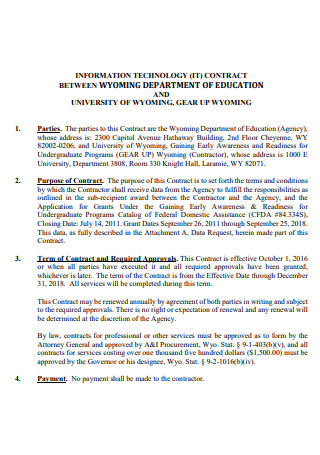
IT Contract Template
download now -
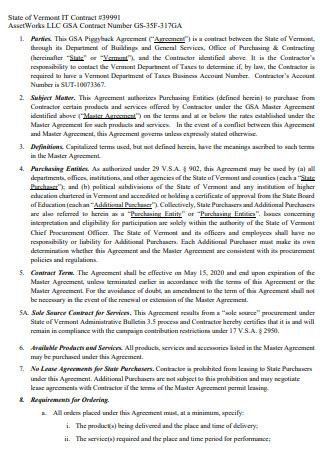
State IT Contract
download now -
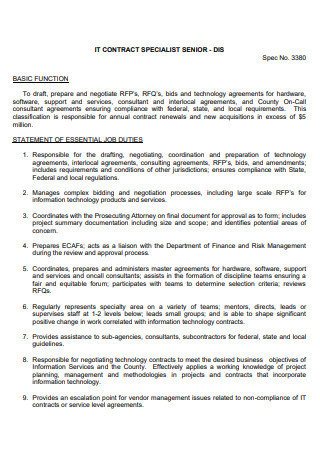
Senior Specilaist IT Contract
download now -
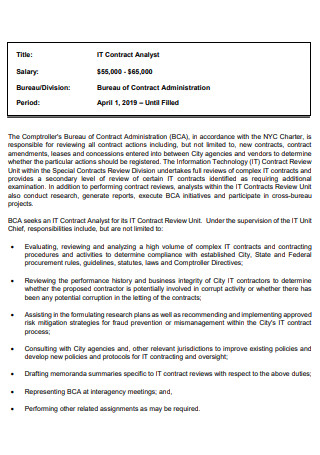
IT Contract Analyst
download now -
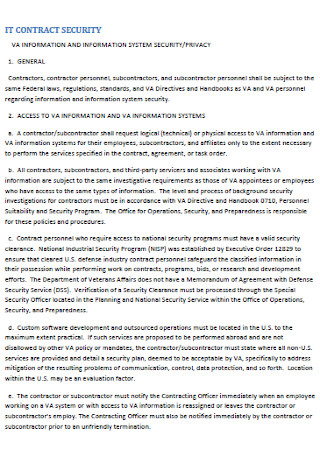
IT Contract Security
download now -
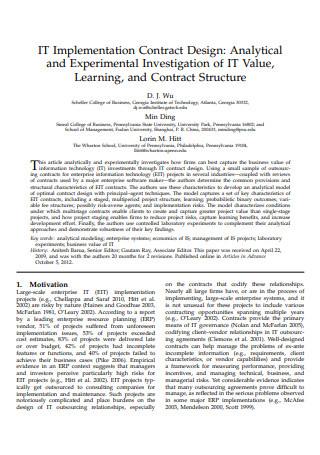
IT Implementation Contract Design
download now -

City IT Contract
download now -
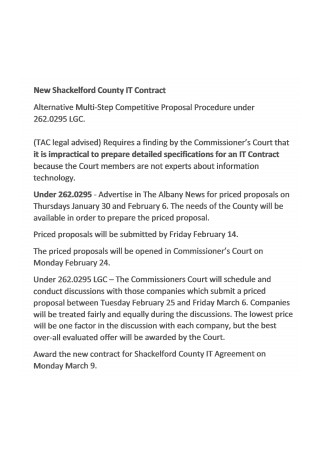
Sample IT Contract
download now -
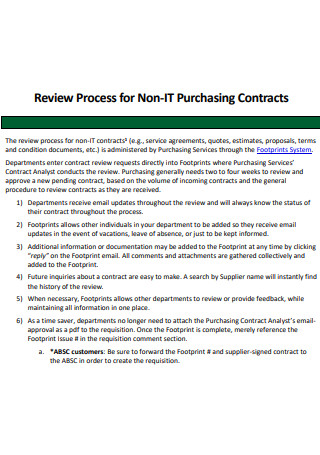
Non-IT Purchasing Contracts
download now -

IT Contract Termination
download now -
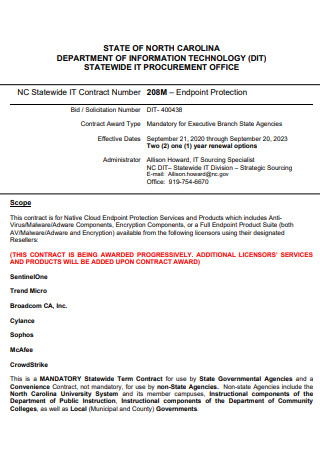
Department of IT Contract
download now -
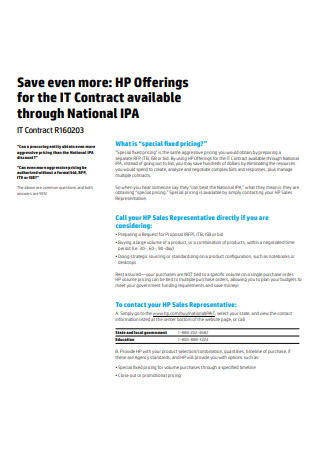
National IT Contract
download now -
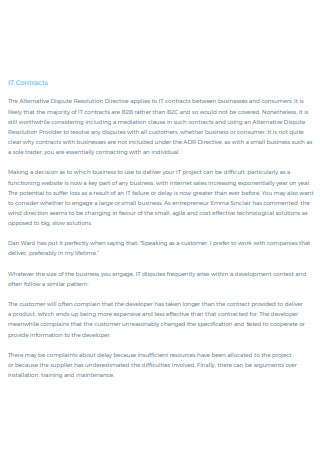
IT Contract Example
download now -
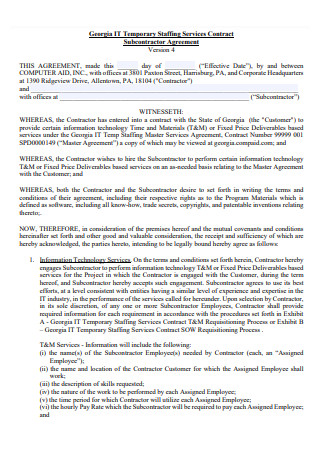
IT Temporary Staffing Services Contract
download now -
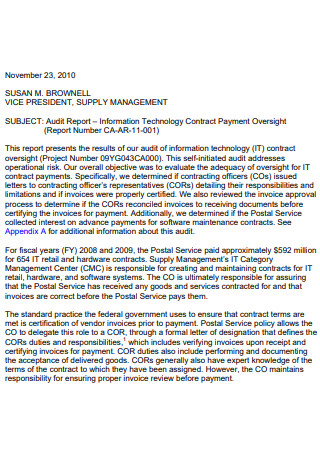
IT Contract Payment
download now -
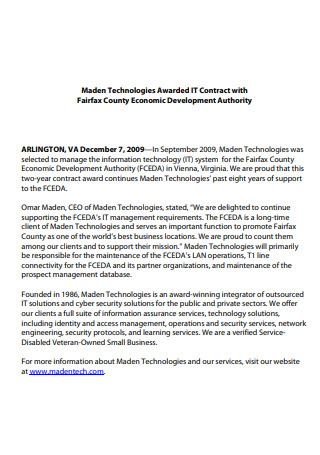
IT Contract in PDF
download now -
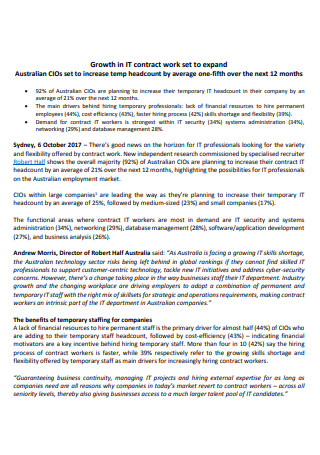
Growth in IT Contract
download now -

IT Network Contract
download now -
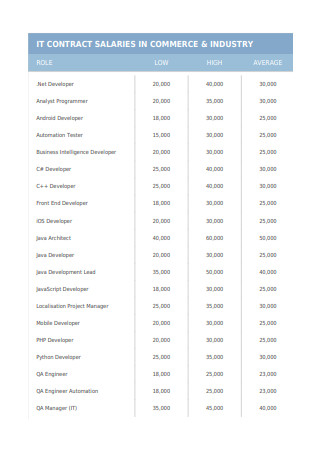
IT Contract Salaries in Commerce and Industry
download now -
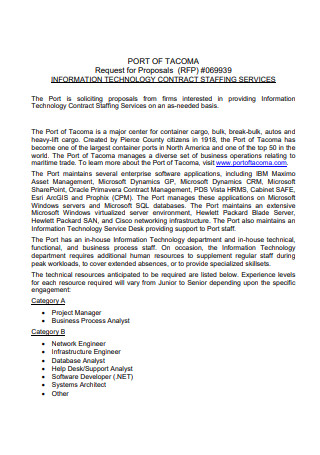
Information Technology Contract Staffing Services
download now -
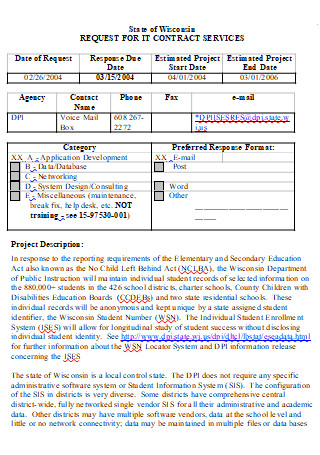
Request For IT Contract Services
download now -
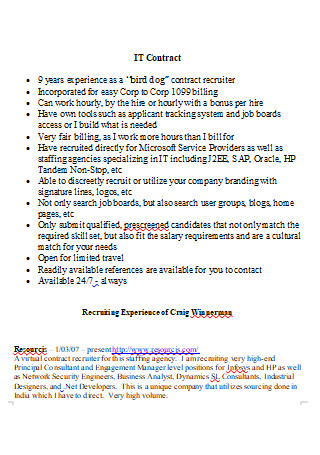
IT Contract in DOC
download now
FREE IT Contract s to Download
21+ Sample IT Contract
What is an IT Contract?
Who are IT contractors?
Different Types of IT Contracts
Elements of an Effective IT Contract
What Not to Include in an IT Contract
How to Prepare an Effective IT Contract
FAQs
What is the difference between an IT contract employee and a consultant?
What are the responsibilities of someone working in IT support?
In a contract, what is the order of precedence section?
What is an IT Contract?
By definition, an IT contract refers to any type of third-party contract under which an IT system is leased, licensed, supplied, supported, or maintained. It is a legal document that serves as a provision of information and any communications technology services and maintenance technology services to the company or to any of its subsidiaries. An IT contract can also be any type of contract that has at least some sort of connection to the world of information technology. An IT contract is signed whenever someone orders goods over the internet, sells their time as a web developer, or whenever they license someone else to use their software.
Who are IT contractors?
IT contractors refer to companies that can provide skills to clients on a business-to-business contract basis rather than becoming traditional employees. They can either work directly for the end client (which creates the need for a direct contract) or they can also find assignments via recruitment agencies. IT contracts run for typically 6 months but can be more or less. Since contract renewals can also be an option, many IT contractors end up working with the same client for several years.
Different Types of IT Contracts
As stated earlier, IT Contracts can be any type of contract that has some connection to the world of information technology. When the situation is right, many typical offline contracts can be IT contracts even if they are simply accepted online. Here are some types of IT Contracts:
- Consulting Services Agreement – a type of agreement where one company or a consultant provides consulting services to another company (their client)
- Professional Services Agreement – a type of service agreement where one company provides professional services to a client
- Support and Maintenance Services Agreement – a type of agreement in which a company or a contractor provides support and maintenance for all the software and hardware that is being used by their client
- License Agreement – an agreement where a company or an individual gives their client licenses to use their software or any other types of intellectual property.
- Software as a Service Agreement – an agreement where a company provides software to another company or an individual via a web application or mobile application.
Elements of an Effective IT Contract
While many different aspects of IT contracts are very similar to any other ordinary contracts, there may still be a number of other elements that can require extra care and skill to ensure that they do not harm your organization in the long run. With that being said, here are the elements or the contents that you should keep an eye for in an IT contract:
What Not to Include in an IT Contract
There are also items that should not be included in writing an IT Contract. Here are the following:
- Site visits for the purpose of installing new servers, computers, printers, or installing new network users
- assistance for non-standard software
- support for aging equipment
- any items or terms that were broken before the start of the contract’s duration
- any kind of upgrades
- items that break due to the misuse of the client or any items that have been altered resulting in breakage or malfunction.
How to Prepare an Effective IT Contract
All kinds of IT contracts will be different. They usually depend on the kind of support that is required in the project. But generally speaking, all contracts should set out the main provider’s expectations of the organization as well as the responsibilities of the provider. An effective IT contract is needed in order to keep the parties involved throughout the duration of the contract. Here are the steps to follow and consider when you need to make one of your own:
1. Write a clear statement of the work.
In preparing the IT contract, a very clear description of the work to be done is needed. This is usually written in the beginning so that the parties involved immediately know what to expect. In this part, you need to establish your identity and what you are going to do for the potential client. Stating that you need to connect with the audience is not enough. You need to clearly state your responsibilities throughout the duration of the business relationship. The necessary names should also be indicated in this part of making the contract.
2. Indicate the start and end dates.
The next step to be taken would be indicating how long the parties involved should be working together. This can be done by outlining the project’s scope and the dates on when certain goals should be achieved. It is important to avoid being vague in this process, and a clear number and dates method should be used when talking about the timeframes of the project. Also, outline some milestones and deadlines here, and make sure that you are clear about when something should be due or when the deliverables should be provided, and its corresponding results or consequences if not done on time. A rollover clause can be included here too, which automatically renews the contract if certain terms are met.
3. Indicate the payment details.
In this step, it is important that the exact details on how payment is done should be included. It can be done upfront, or through a number of months until it is completed. The amount being charged is completely up to you. When a monthly payment method is being used, performance bonuses can be added for additional incentive and motivation. But it is important when using a monthly method to include an upfront payment, which is to be paid before the work or business relationship begins.
4. Indicate the key contact or contacts.
The IT contract should be able to specify who will serve as your key contact. This individual should be someone who holds a senior position, who is ideally the business owner. A key contact in an IT contract may also be referred to as the account manager. The responsibilities of a key contact include being responsible for providing the regular activity reporting, being the key contact in case any issues are being escalated, and being responsible for compliance with the support contacts.
5. Include clauses regarding confidentiality.
An essential step in making an effective IT contract is including terms about confidentiality, its respective clauses, or a non-disclosure agreement clause. Having a non-disclosure agreement included in the contract benefits all parties involved because it protects their trade secrets and any other shared personal information. Also agreeing to a non-compete clause means that no work with a client’s competitor is to be made within the duration of the contract.
6. Include the termination clause.
Writing a termination clause is also important in preparing the contract. This part states the things that need to be done should the client wish to terminate the service. Criteria should also be included should the contract be ended earlier than planned. This could be on a specific date. It should also state the things to do when the project is finished or the final payment is completed. As stated earlier, this section should also include the rights and responsibilities of both parties that should still continue even if the contract is already terminated or finished.
FAQs
What is the difference between an IT contract employee and a consultant?
IT contract employees refer to individuals who are hired by consulting or staffing firms and then assigned to projects at companies that require assistance. When referring to independent consultants, these are the people who sell their own services to businesses or companies and bill them for the services being sold.
What are the responsibilities of someone working in IT support?
The responsibilities of someone working in IT support include maintaining the computer networks for all types of businesses, providing any form of technical support, and ensuring that the whole operations of the company continue to run smoothly. They are also responsible for maintaining and monitoring the company’s computer systems, as well as installing, configuring, and resolving any kinds of technical discrepancies as they emerge.
In a contract, what is the order of precedence section?
The order of precedence section of a contract establishes the order of documents should any conflict arise when having a look at the language of the individual documents. For example, when a software program is to be acquired by the buyer, he/she may be able to generate a request for proposal document, and the seller may prepare an appropriate response which then sets forth a procurement contract. The contract’s order of precedence provision may then state that the contract terms and conditions take precedence over the request for proposal document and that the buyer’s request for proposal will take precedence over the seller’s answer to the request.
If a deal is to be done between an IT support provider and a client or when a company needs to procure hardware, software, or services for their next big project, the managers then need to understand the importance of having an effective IT contract. Having a contract signed ensures the company’s confidence in the level of support that they will receive from the provider. And as said many times, it protects their interest should any dispute arise. Different examples of IT contracts can be found above this article if you need a reference to use for yourself.
